How many water bottles does one person need? How many USB sticks, or tote bags? The answer is probably less than the number they receive after several years working in an office and visiting professional conferences. Throughout its history, the branded swag industry has focused on optimizing cost and delivery speed – just like retail does. The difference between the two? Retail has also been optimizing the sustainability of its products for some time. The promo industry has been lagging behind on this matter, but that changes now.
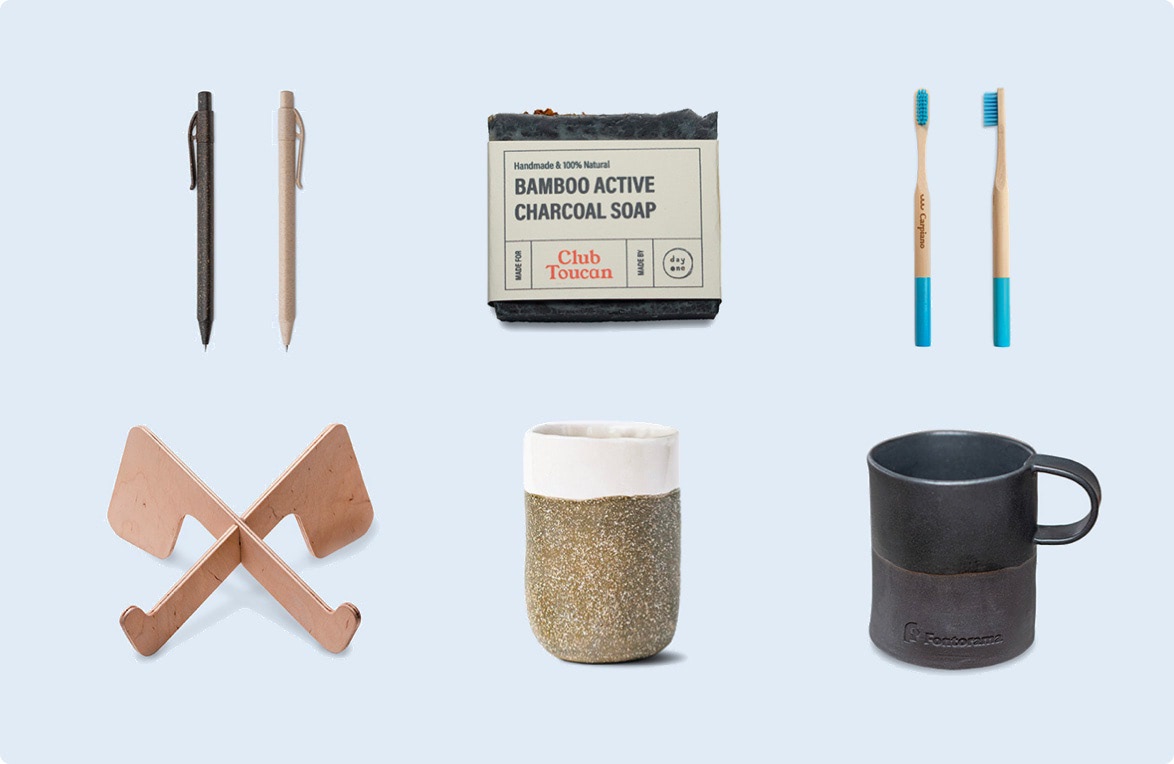
Consumers want sustainable products
The way in which people consume is shifting; people are thinking more about the products they buy and the way they shop. Millennials, who will represent seventy-five percent of the workforce by 2025, already name sustainability as a shopping priority. So why do we continue to bring them cheap, soulless swag which they didn’t ask for and probably don’t want?
Gifting is still a great way to win the hearts of your employees, partners, customers and prospects. In this guide, I will show which aspects you should consider to make your merchandise and corporate gifting more sustainable and, as a result, improve your merchandise ROI, strengthen the brand and reach your marketing, business development, and HR goals.
Measuring Sustainability
First of all, we need to keep in mind that it is highly complex and notoriously difficult to measure sustainability. Sustainability has so many factors that often it’s hard to confidently claim that one product is necessarily more sustainable than another; one might be made from recycled materials, another is made at a Fairtrade-certified factory.
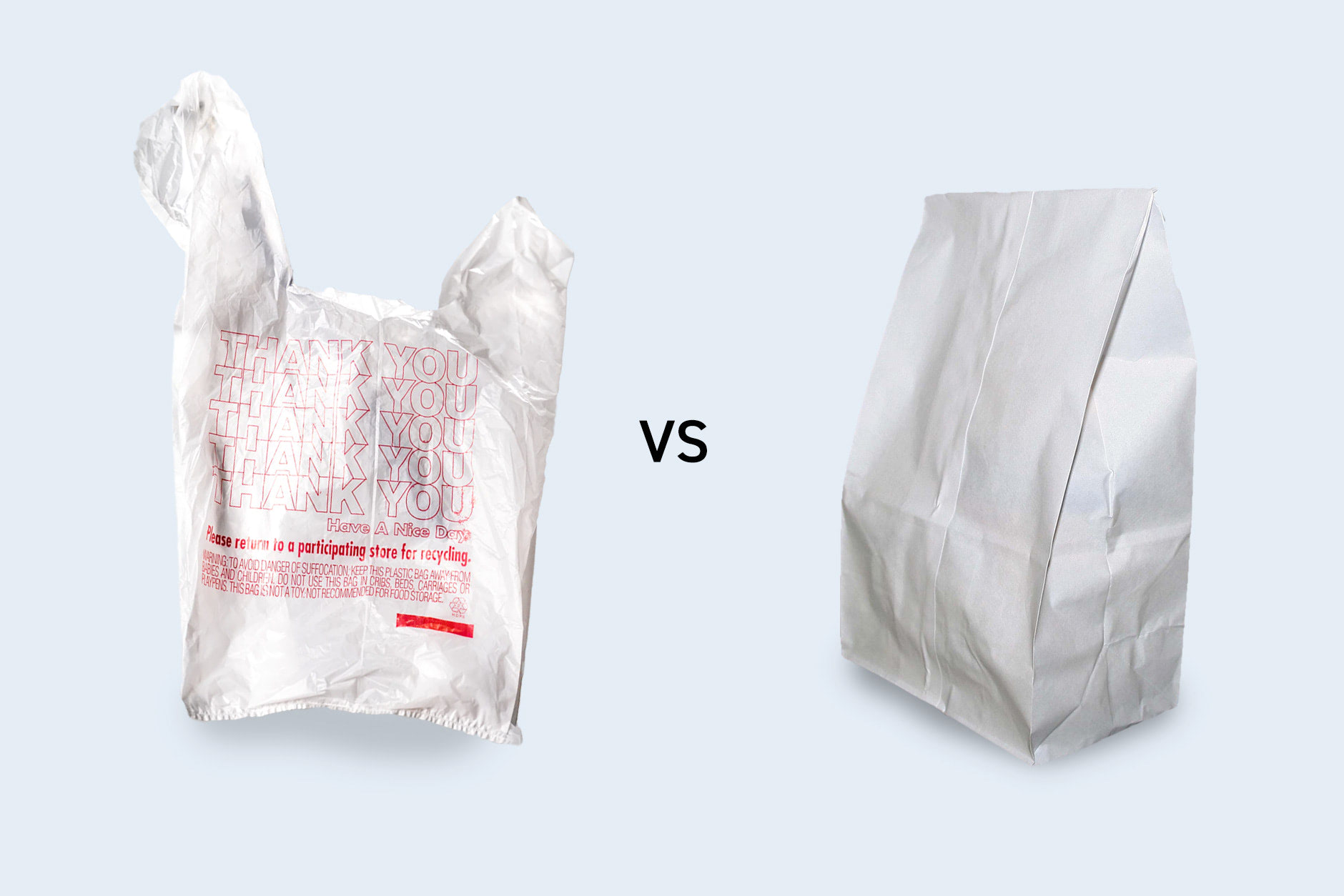
The classic example for such complexity is plastic bags vs. paper bags. We all know that plastic is really bad for the environment because it’s not biodegradable. Yet it can be used many more times than a paper bag, which is manufactured using four times more energy than a plastic bag. The production of a paper bag requires the use of chemicals and fertilizers which are bad for the environment. However, we don’t know if the plastic bag will be used multiple times, which is highly important in calculating its environmental impact. As you can see, sometimes it’s hard to gauge the sustainability of one type of product over another.
Nevertheless, I’ve prepared some rules of thumb and some general guidelines which you can use to make more educated purchasing choices for your corporate merchandise.
Consider swag alternatives
Since our goal is to optimize the sustainability of our choices, it’s important to point out that the most sustainable option is to not to have any swag at all. This immediately saves the resources that would be put into sourcing the materials; transporting them to the manufacturing facility; the electricity and water needed to produce it and later transport it to you.
Ask yourself if branded merchandise is the best way to achieve your marketing, HR or sales goal. If it is, before we talk about physical products, here are three more options that may be more sustainable and a good fit for non-branded corporate gifts as a part of your new employee welcome kit, anniversary or birthday gift.
Digital gifts

Digital gifts will not expose your logo, but in some cases they can have a greater impact on the recipient’s life and are therefore potentially very valuable. For example:
- Headspace subscription ($12.99 - $57.99) might provide your colleague or client a month or a year of less stress and improved wellness, which would have a bigger impact than a USB-stick.
- Kiva card (starting at $25) would provide them with an opportunity to lend this amount to an entrepreneur in a developing country where it could make a big impact by creating jobs in their community. And the best part — they will repay this amount over time, so your client or colleague can re-lend it to another person in need later.
Gift cards
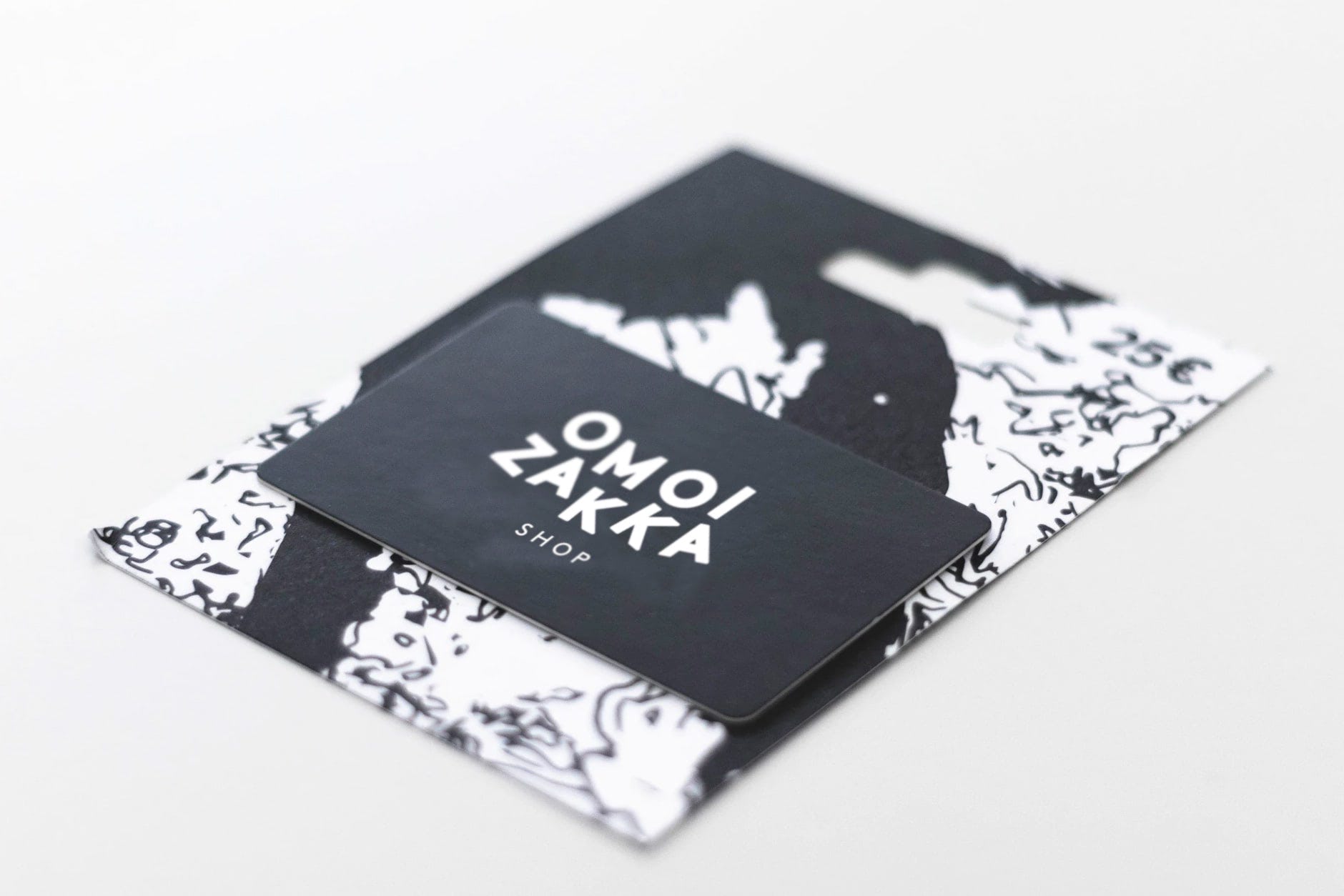
In the US, it’s estimated that during Christmas about $15 billion will be spent on unwanted gifts. Sixty-one percent of consumers in the US received such gifts at least once — a huge amount of financial and material waste. To make gifts more eco-friendly, we need to make sure they will be used and not end up in the trash quickly. Gift cards increase the chance that the receiver will get a product with the highest value for them.
You might want to avoid a generic Amazon gift card; you can find great shops with impactful products where everyone can find something for themselves, for example:
- The School of Life (EU/US/UK) — resources for living more resilient and fulfilled lives.
- Buy Me Once (US/UK) — shop with highly durable goods.
Here are three small US-stores with a variety of products offering gift cards:
- Omoi Zakka sells thoughtful, useful stationery and lifestyle goods.
- Park Life is a San Francisco-based independent retail store and art gallery. They sell books, modern design objects, prints, homewares, etc.
- Present & Correct was founded by two graphic designers and sells stationery sourced from more than eighteen countries.
You may decide that you still need to get some physical swag, which is a better fit for conferences, meet-ups or corporate gifts. Below, I use concrete examples to explain some of the considerations when choosing a sustainable product to use as your branded merch.
What makes swag sustainable?
Increase the chances for the swag to be used
Ending up in the trash too quickly is probably the biggest problem with branded merch today. To maximize the chances for your product to be used, gift something everybody needs regardless of their design preferences, gender, age, etc.
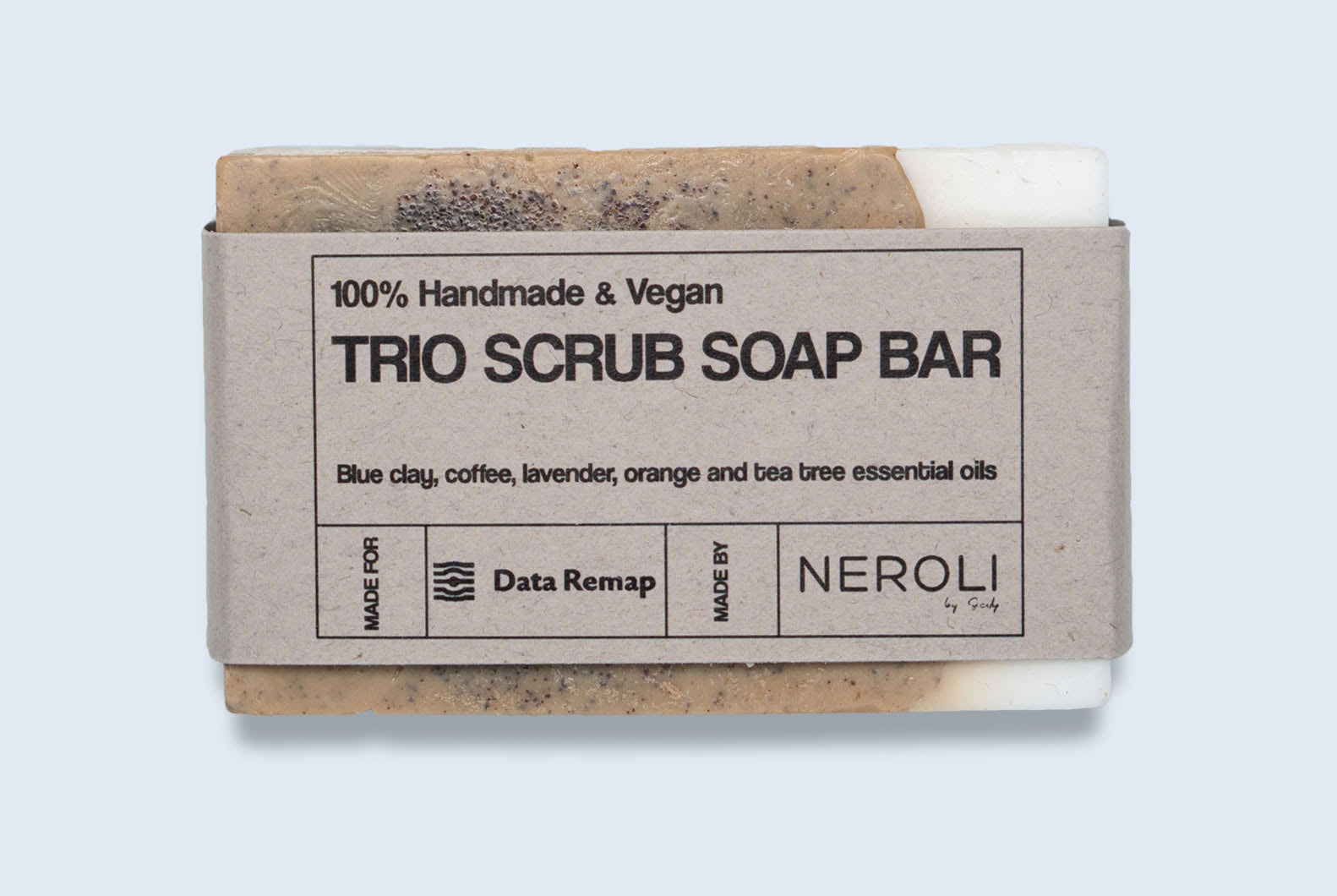
Some examples are consumer goods such as:
- Soap
- Toothbrush
- Hand sanitizer
The downside is that disposable products provide relatively low exposure for your logo due to their short lifecycle.
Durability
Consumer products don’t last as long as they used to. Clothes are now built to fall apart and are on average worn only 7 times in their lifetime. Consumers want products they buy to last considerably longer and they’re frustrated with the current quality of goods on the market today.
This problem is even more serious with corporate gifts, since companies optimize the swag cost at the expense of the item’s quality and usefulness. Ideally, you want the product to be used for as long as possible, so your logo is exposed for as long as possible; but cheap, non-durable products end up in the trash quicker and miss this goal.
The solution? Buy merchandise of higher quality, with better materials and design, which will last longer.
Do not buy more than you need
After a conference, a marketing campaign, or even a rebrand, companies often have t-shirts, water bottles, hats, etc. that cannot be used anymore. Unfortunately, these items are often disposed of irresponsibly. There is even a company, SwagCycle, that tackling this problem and helps companies find a way to dispose of unused swag responsibly.
Don’t get more products than you need. Try to be more conscious of how many items will you actually use. Find swag suppliers that provide low order minimums, so you can buy only what you need.
Because of high minimums most swag shops require, many startups or agencies are left with very limited choices: either not having access to high-quality branded merchandise, or having to order more than they need in order to meet the minimum order requirement. (At Swag Fair, for many products we offer minimum orders as low as five units).
Buy from small businesses
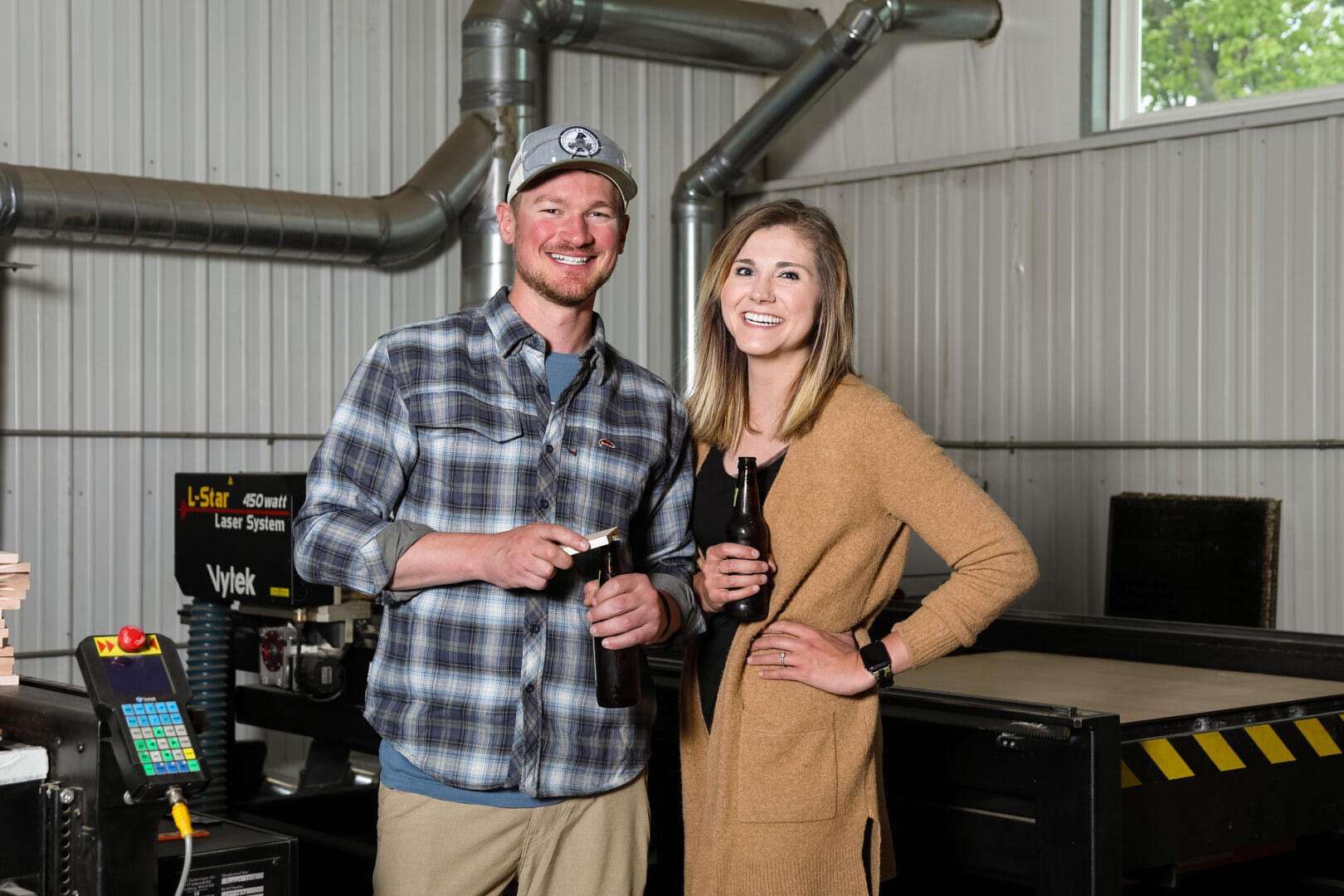
Small businesses are the backbone of the economy and they:
- re-spend locally, creating economic opportunities inside their communities. In fact, seventy-three percent of local business spending stays in the community, against just forty-three percent for global businesses
- donate 250 percent more than large businesses to charity
- promote entrepreneurship, encouraging more people to build businesses and create new jobs.
Responsible labor
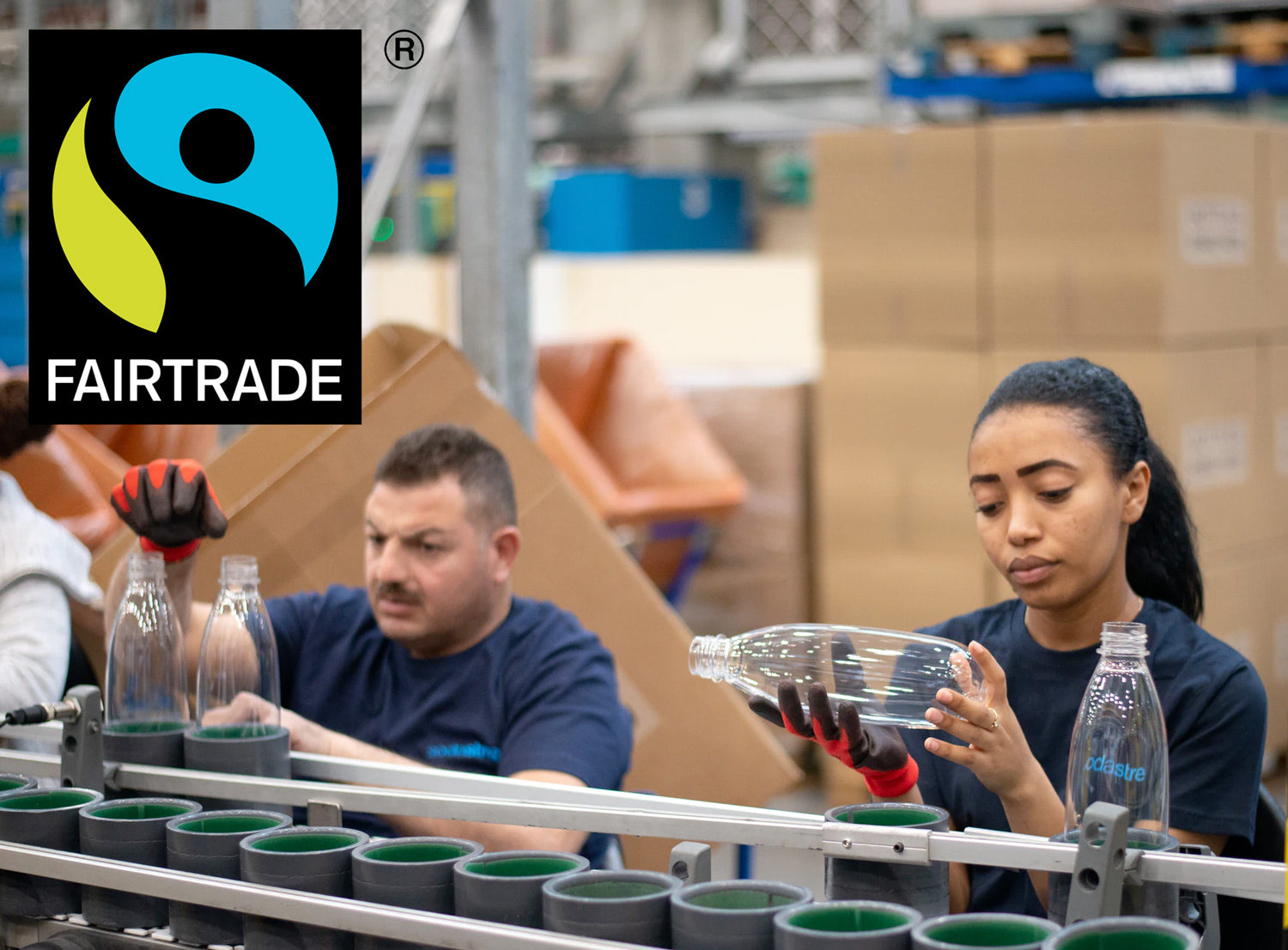
Most merchandise is produced in China, or developing countries where the labor regulations may have low standards. If you choose to buy products made in such regions, try and get more information about the production factory and its working conditions. You can also just look for Fairtrade-certified products, which will promise a higher social and environmental standard.
An even better approach is to buy products from Europe or the US. These regions have much stricter regulations on how workers are treated — their working hours, minimum wage, access to health insurance, etc. So, you can use as a rule of thumb that products made in more developed countries are more likely to be more ethically sustainable.
Swag made of sustainable materials
Renewable materials
Natural resources that can replenish themselves after use are called renewable resources. To avoid company swag that is not eco-friendly, you should not buy merchandise made, for example, of plastic. Plastic is made of oil, coal, gas — all non-renewable sources. It means that many types of very popular branded merch is not eco-friendly — plastic pens, water bottles, PopSockets, etc.
Here are some examples of renewable and more eco-friendly materials:
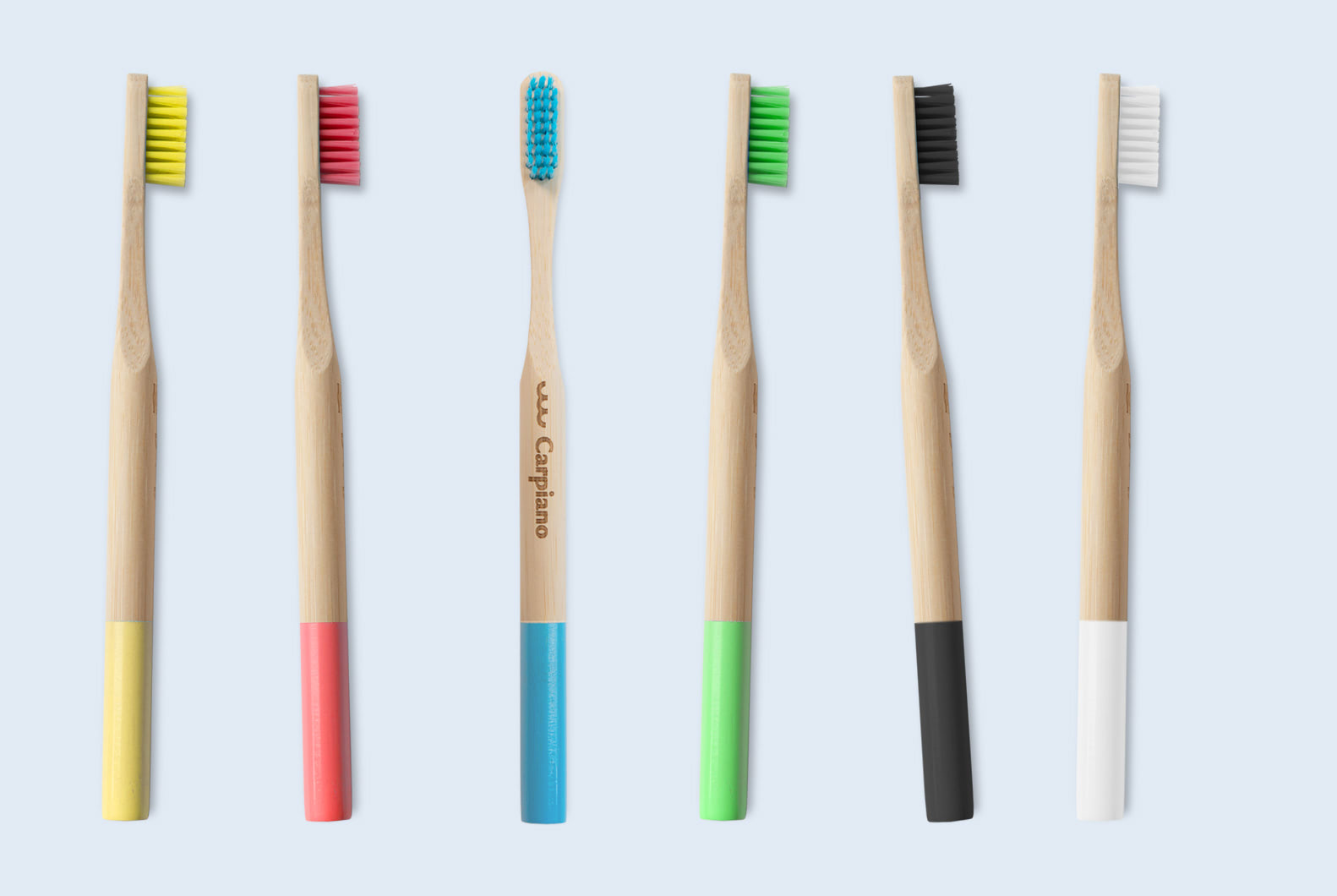
Bamboo is a great alternative to plastic and is considered a highly sustainable material. Bamboo is a grass and not a tree; it’s fast growing and self-regenerates from its own roots, so it doesn't need to be replanted. It doesn’t require large amounts of water, pesticides, or labor.
Bamboo product examples: toothbrushes, straws.
Cork can be harvested from the bark of cork oak trees and can be re-harvested over and over again. Portugal is the biggest manufacturer of cork, followed by Spain, Algeria and Morocco.
Cork product examples: self-massage balls, yoga blocks, bags, yoga mats.

Felt is a biodegradable by-product of the textile industry. Its raw material is wool and it is renewable.
Felt product examples: laptop sleeves, mouse pads, bags.
Recycled materials
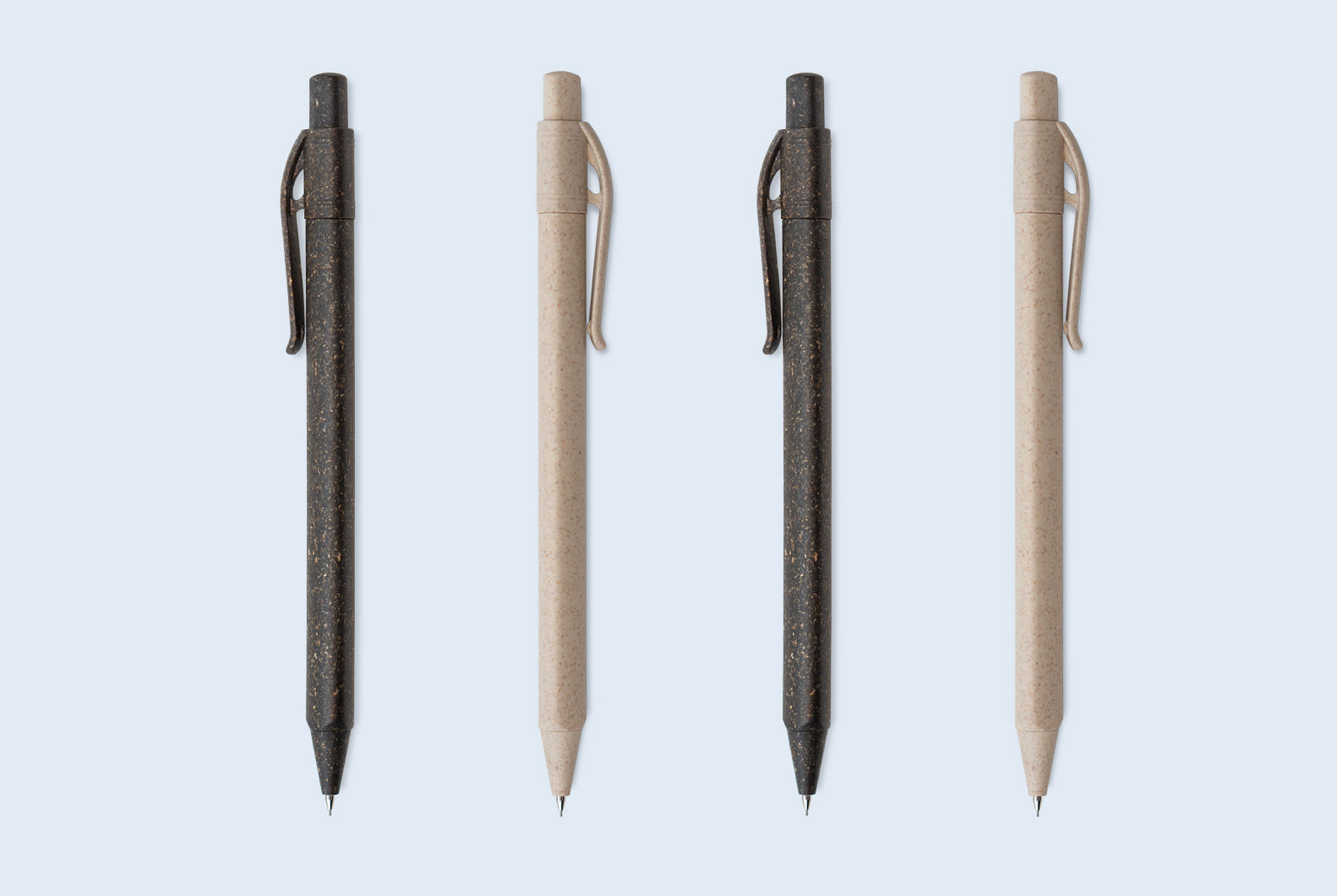
If a product is made of recycled materials, it does not necessarily mean that their production doesn’t leave any footprint. It still require resources to produce them, but at least they require less raw materials.
Recycled material product examples: paper notebooks (made of recycled paper), pens (made of recycled plastic and natural grass).
Recyclable materials
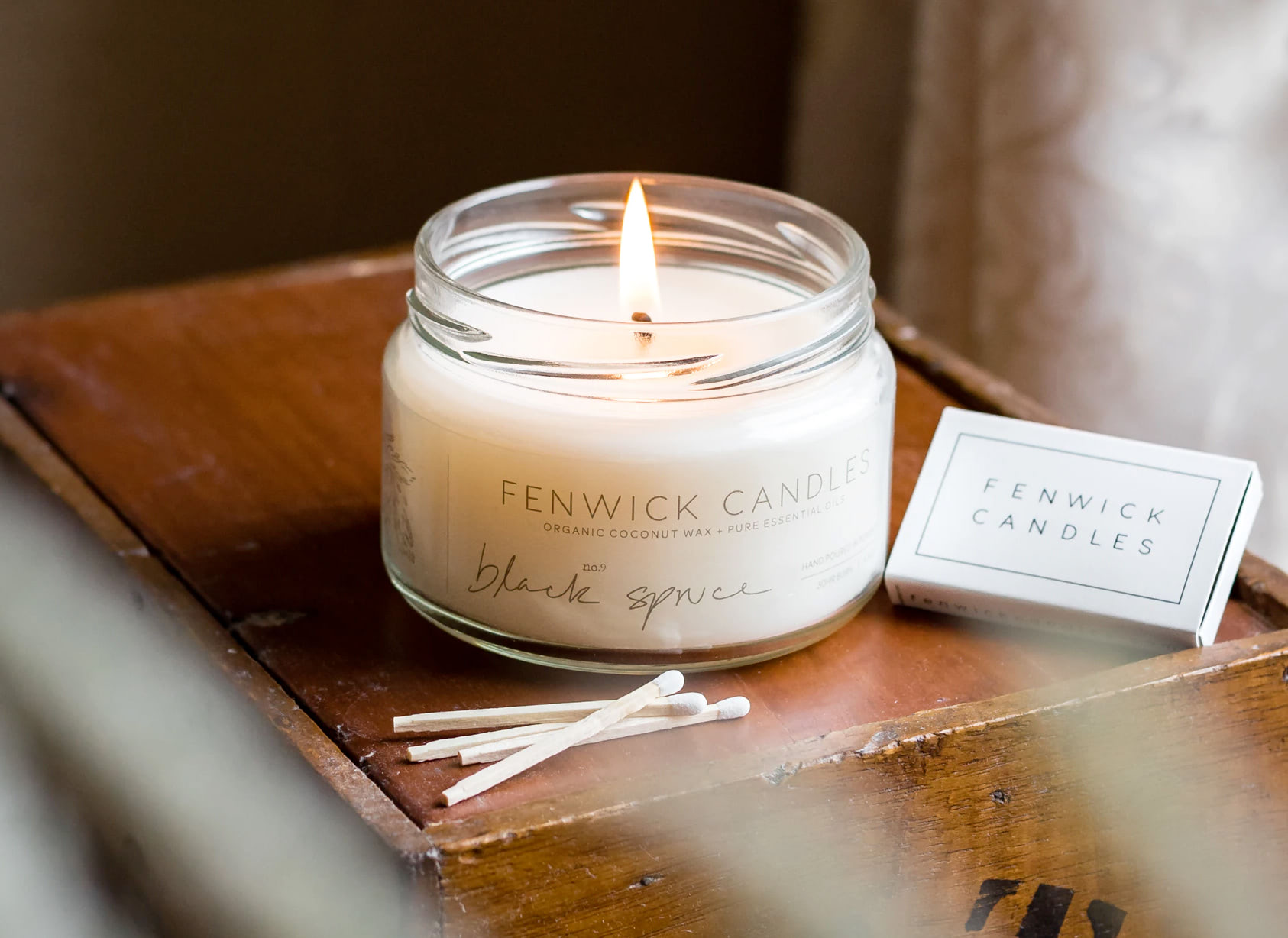
When buying company swag, consider its disposal. Use products that are made of materials that are easy to recycle or dispose of. The examples below can be recycled in most western countries:
- Glass-jarred aromatherapy candles. Here is how much recycled material can be used in production of different types of glass: green glass (ninety to ninety-five percent), brown glass (seventy percent), white glass (sixty percent)
- Notebooks, notepads and other paper products. Later, products like cardboard, napkins and toilet paper can be created from your recycled product.

We should look for products that are not just made of recyclable materials, but also are likely to be recycled. For example, stainless steel is very eco-friendly because it’s 100 percent recyclable. However, Swell-like bottles made of stainless steel cannot be recycled at the curbside, which may make such bottles not particularly sustainabile.
Upcycled materials
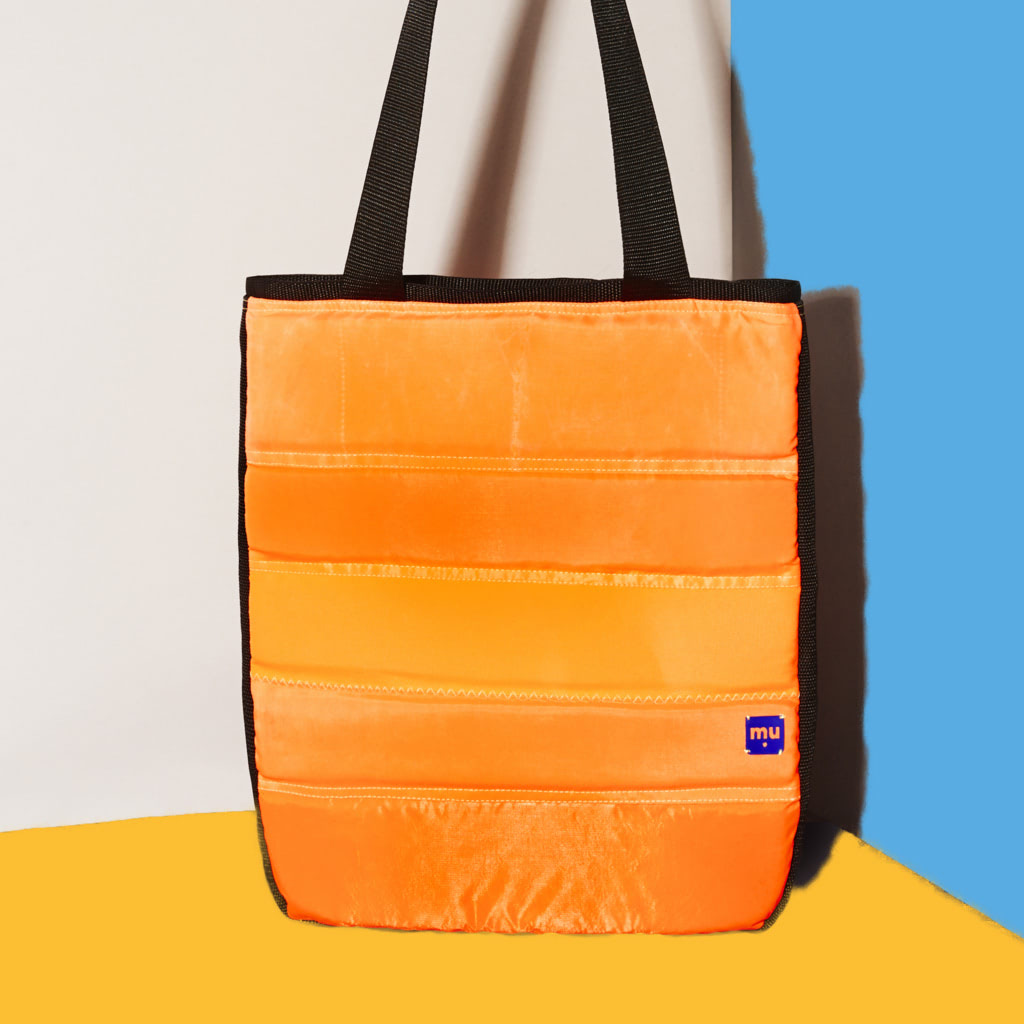
Upcycled materials use existing materials that would otherwise be discarded or used inefficiently. Such products use less energy and have a smaller environmental impact than products made from raw materials. Here are some products examples:
- Makers unite and mimycri are producing laptop sleeves and bags from life-vests and boats used during migrant travel. The products are manufactured by the refugees themselves.
- Sonoma USA products are made of old banners and billboards, grain and feed bags, and burlap coffee bean bags.
Animal rights
If you decide to buy swag or corporate gifts made using materials involving animal byproducts, try to make sure they are sourced responsibly. For example, the beeswax used for making candles should be sourced locally and have an organic certification to ensure it meets high production standards promising ethical treatment of animals.
Vegan leather is a substitute for leather made from animals. Unfortunately, this material is not straightforward, as it is sometimes made of polyurethane, which is plastic, and may be even more harmful for the environment than normal leather. A better alternative is vegan leather produced from more innovative and eco-friendly materials, such as trees leaves, peels, or other fruit waste.
Packaging materials
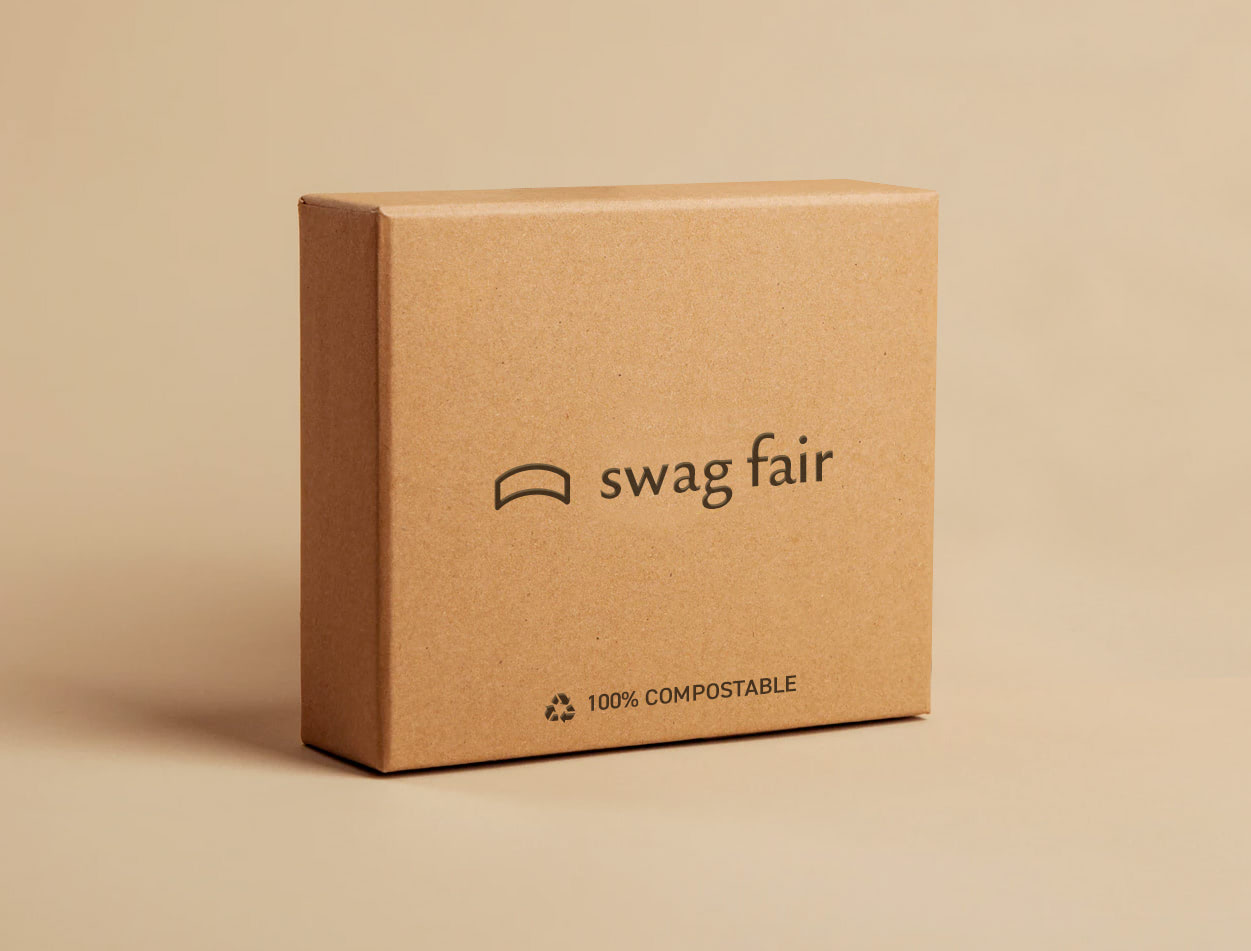
When comparing bulk production for the promo industry compared to retail, the latter would probably require more packaging — each item needs to be packaged individually in a box with a barcode and item description on it to be placed on a store shelf.
Nevertheless, it’s a good idea to make sure the swag you buy isn’t using excessive amount of packaging, and the packaging it uses favors paper and cardboard over plastic or foam plastic. It is often hard to know the packaging policy of your supplier, but you can at least use a more sustainable solution for the end-packaging your company uses for the gift receiver:
- Noissue (Shipping worldwide) offers sustainable wrapping tissue, tape or mailers.
- Packhelp (EU) offers sustainable packaging solutions.
Conclusion
To recap what we just learned, here’s what you should remember to get sustainable company swag:
- The most sustainable choice you can make is to not have any swag at all.
- When possible, get digital gifts or gift cards instead of physical products (downside —those options won’t have your branding).
- Get products that are likely to be used, for example consumer goods like soap and hand sanitizer.
- Buy merchandise of higher quality, better materials and design, so it will last longer. This makes it more sustainable, but also exposes your logo for longer.
- Try your best to predict how much swag you will end up using to minimize waste.
- Buy products made locally by small businesses.
- If you end up buying products made in developing countries, prioritise those with a transparent supply chain, ideally with Fair-trade or similar certification.
-
Materials to look out for:
- Renewable, e.g. bamboo, felt, cork.
- Anything recycled, e.g. paper, plastic.
- Recyclable e.g. glass, paper.
- Upcycled products (these are harder to find).
- Avoid animal byproducts when possible; when not, look for organic or similar certification.
- Reduce packaging, use sustainable packaging materials, e.g. biodegradable or recycled.

